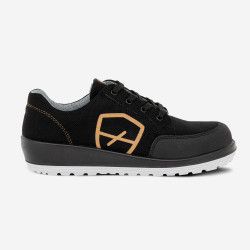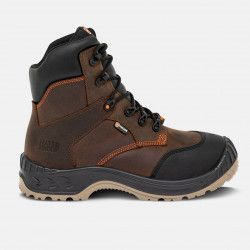Practical advice & expertise
How do you avoid sore feet in safety shoes?
Foot pain can be a real problem for some people who work in safety shoes. These discomforts can be the result of a variety of factors, from the wrong size to the choice of materials. In this article, we explore the most common sources for this pain and offer practical solutions to prevent it.

Sore feet in safety shoes: the most common problems
The wrong size
When it comes to foot pain when wearing safety shoes, the first problem is often the wrong size. Buying the wrong size can lead to a myriad of issues, from painful blisters to chronic heel and toe pain. Shoes that are too small compress the feet, while shoes that are too big can lead to unpleasant rubbing and skin injuries. Choosing the right shoe size is crucial to ensuring optimum comfort throughout the working day. It's essential to measure your feet correctly and choose a size that allows enough room for movement while providing good support.
Problems with the toe cap
The toe cap is often a critical point in safety footwear. Some workers may experience toe pain, rubbing and unpleasant shocks during collisions. It is essential to choose footwear with sturdy, comfortable toe caps to ensure maximum protection and well-being for feet while you are working. Poorly designed toe caps made from inferior materials can cause serious injury and jeopardise the wearer's safety.
The sole
The sole plays a crucial role in the comfort of safety shoes. Unsuitable insoles can result in poor weight distribution, leading to foot, knee and even back pain. All these problems are referred to as musculoskeletal disorders. In France, according to Santé Publique France, MSDs (musculoskeletal disorders) are among the most widespread occupational illnesses. For your safety shoes, ergonomic insoles and outsoles adapted to your use and the shape of your feet will greatly improve your overall comfort.
A few tips to avoid sore feet in safety shoes
The right size of safety shoe
It's important to remember that the size of your feet can fluctuate depending on your posture, weight and other factors. It is sometimes necessary to measure your foot precisely before buying new shoes, as not all manufacturers use the same sizing method.
If you don't have a foot measurer at your disposal, here are our Parade tips for measuring your foot correctly.
First of all, it's best to take this measurement at the end of the day. Why? Because during the day, feet tend to swell, making them larger in the evening than in the morning. Put on your usual pair of socks. Stick a sheet of white paper on the floor and make sure it doesn't move by securing it with adhesive tape. Then stand on the sheet with your foot on it. Using a pen, trace the outline of your foot and make a mark at the end of your big toe and the back of your heel. Repeat this operation with your other foot.
Using a ruler, measure the length between the two marks you have made. Finally, enter your size on this chart to find your shoe size:
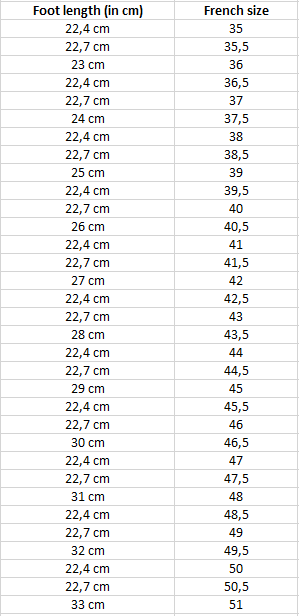
Are your feet different sizes? Don't worry, use the largest size. Choose a shoe size that gives you enough room to move, while providing the best support.
Note that a shoe size is not determined solely by the length of the foot. A foot can have different shapes, from narrow to medium or wide.
This explains why, from one shoe to another, we may not get the same feel and comfort.
To sum up, your choice of size will depend on the volume and length.
Fastening your safety shoes properly
Proper lacing of your safety shoes is crucial for a number of reasons:
• Stability and support: Proper lacing ensures that the foot stays firmly in the shoe, reducing the risk of slipping and twisting. Over-tight lacing can restrict blood circulation, leading to numbness, pain and even injuries such as corns or calluses. Over-tight lacing can also cause problems with the joints and muscles of the foot, leading to increased discomfort and fatigue during the working day. So it's important to strike a balance in the lacing, offering a secure fit without compromising comfort and blood circulation.
• Injury prevention: Properly laced shoes help prevent blisters, chafing and injuries caused by poor fit.
• Comfort: Proper lacing ensures a comfortable fit, which is essential for those who spend long hours on their feet or on the move in demanding work environments.
• Safety: In the workplace, safety shoes must fit properly to ensure optimum protection against potential workplace hazards, such as sharp objects, chemicals or falling heavy objects.
Here are the best practices to follow for optimal lacing:
1.Position the heel correctly at the bottom of the shoe so that it fits snugly against the heel counter
2.Stretch the laces from eyelet to eyelet, starting from the toe of the shoe
3.Finish lacing using all the eyelets and keep the laces pulled tight.
4.Check that your shoe is properly laced by checking that the lace is taut from top to bottom.
5.Adjust the lacing every two hours as the laces relax and the volume of the foot changes during the day.
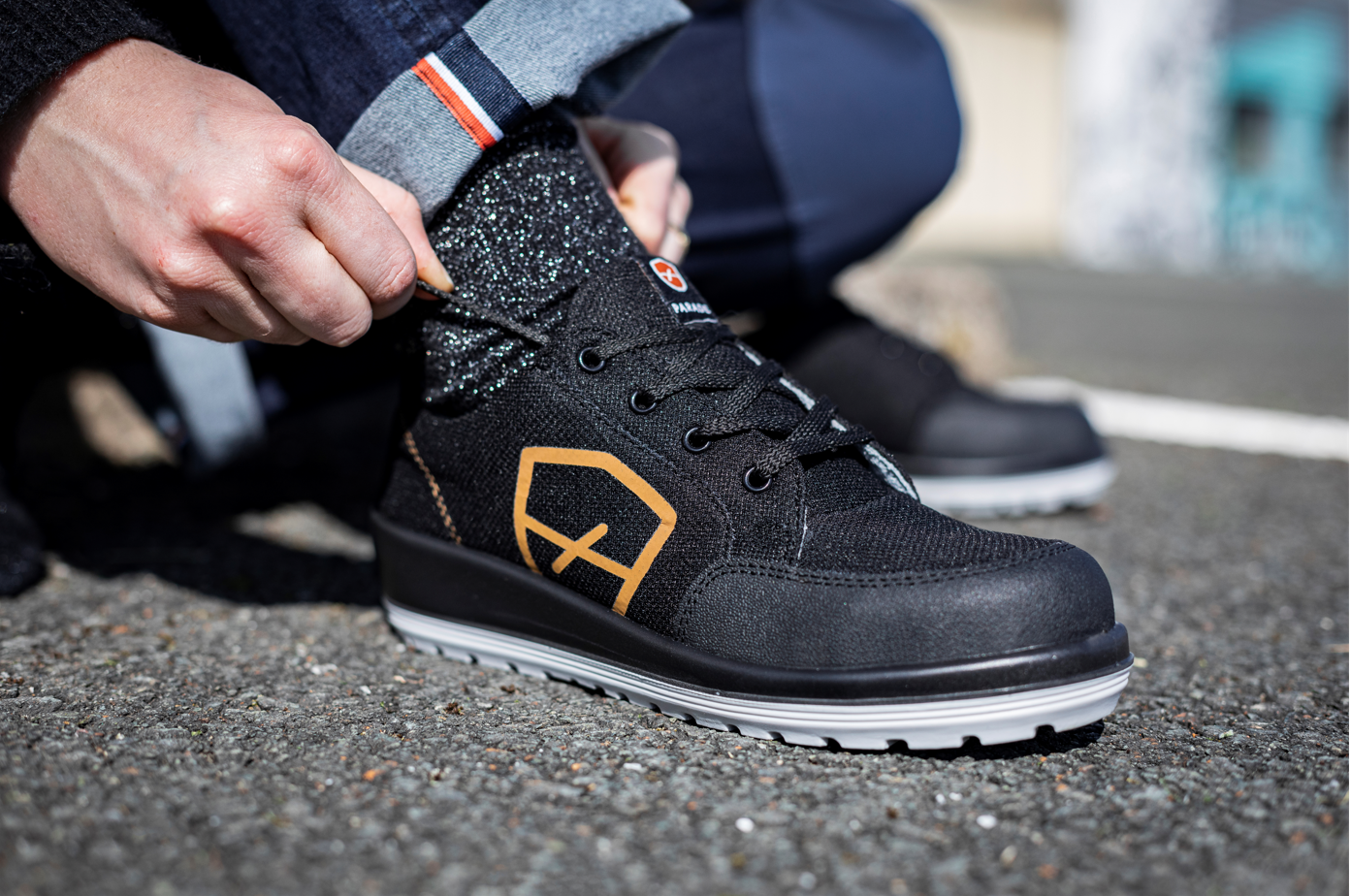
The right insoles for your working environment
The ergonomics of the sole have a direct impact on the comfort of the shoes. Invest in insoles designed to absorb shock and provide extra arch support to reduce fatigue and absorb impact.
At Parade, we have developed a number of technologies inspired by the natural shape of the foot, the arch, an architectural whole that covers all the bones, joints, ligaments and muscles of the foot. These technologies are found on the soles of your safety shoes. Let us introduce you to them:
> VPS (arch support system): The shoe's ergonomic shape maintains the natural arch of the foot, following the arch's curve. This support inside the sole itself provides unrivalled comfort, particularly in the case of small or shuffling steps and extended periods of standing still.
> DRS (Delete Resonance System): Our DRS technology is in the heel and acts as a shock absorber. DRS is a cavity under the heel, in the shape of a semi-circular indent. When the heel is in contact with the terrain, this cavity falls inwards and moves with the heel to adapt to the terrain, preceding the foot’s roll and forward movement. You will find the DRS 2 on our Racing sport sole.
> Parade Air System: the PARADE AIR SYSTEM is an air bubble encapsulated in the shoe's outsole. This air cushion technology assists flexibility when walking.
> Flex system: FLEX SYSTEM technology is suitable for construction work and uneven surfaces. The exclusive design of the sole with its grooves reduces the pressure areas on the sole, providing flexibility and comfort when walking. The shoe moves with the foot and the horizontal and notched grooves under the metatarsal bones, where the foot naturally bends, naturally expel soil as the foot moves forward. This technology is in on all our models with our NEBRASKA and NEVADA soles.
> Be Flex 2.0: BE FLEX 2.0 technology is designed for work that requires more flexibility and comfort when walking, logistics for example. The raised side of the sole is lower on the front of the foot to facilitate flex. The front section has an exclusive design with 3 transverse grooves for movement and maximum flexibility for the front of the foot.
For more information, click here
Checking wear and tear
A sole that shows signs of wear increases the risk of slipping and, ultimately, of accidents. It is essential to regularly check the condition of the studs in your shoes to assess their level of wear. Safety shoes in good condition help:
• Keep you safe: Safety shoes in good condition ensure maximum grip and reduce the risk of slips, falls and accidents on slippery or uneven surfaces.
• Keep you healthy: Worn-out shoes can lead to poor posture, joint pain and muscle injuries. By changing your shoes regularly, you can reduce the risk of musculoskeletal disorders (MSDs).
• Optimise performance: Safety shoes in good condition promote workers' comfort and well-being, which can have a positive impact on their productivity and concentration at work.
• Comply with safety standards: In many workplaces, regular replacement of personal protective equipment, including safety shoes, is required by current legislation or safety standards. Adhering to these recommendations ensures compliance with workplace safety regulations.
Regularly replacing your safety shoes helps maintain a safe working environment, prevent work-related injuries and ensure compliance with safety standards. It's an investment in the safety and well-being of workers, as well as in the company's overall performance. That's why Parade recommends replacing them every 6 months to 1 year, depending on how worn they are.
Wear the right socks for your safety shoes
Specially designed to be worn with protective footwear, safety socks can also help reduce discomfort. They provide extra cushioning and help absorb moisture, keeping your feet more comfortable.
Let's talk about 2 models of Parade socks:
Madrid socks, made mainly from cotton, provide softness and comfort, perfect for sensitive skin. Reinforced to prevent tearing at the heel and toe, available in packs of 3 pairs, they are essential for everyday or professional use with safety shoes.
Miami New socks feature a breathable design with an open mesh top and a breathable strip under the toes. They are quick-drying, hard-wearing and comfortable thanks to polyamide toe and heel reinforcements and a high collar to prevent rubbing. Sold in packs of 2 pairs, they're versatile and can be easily combined with different types of shoes, from safety sneakers to everyday trainers.
Together, Madrid and Miami New socks offer a range of choices to meet different needs for comfort, resistance and breathability, whether for work or leisure.
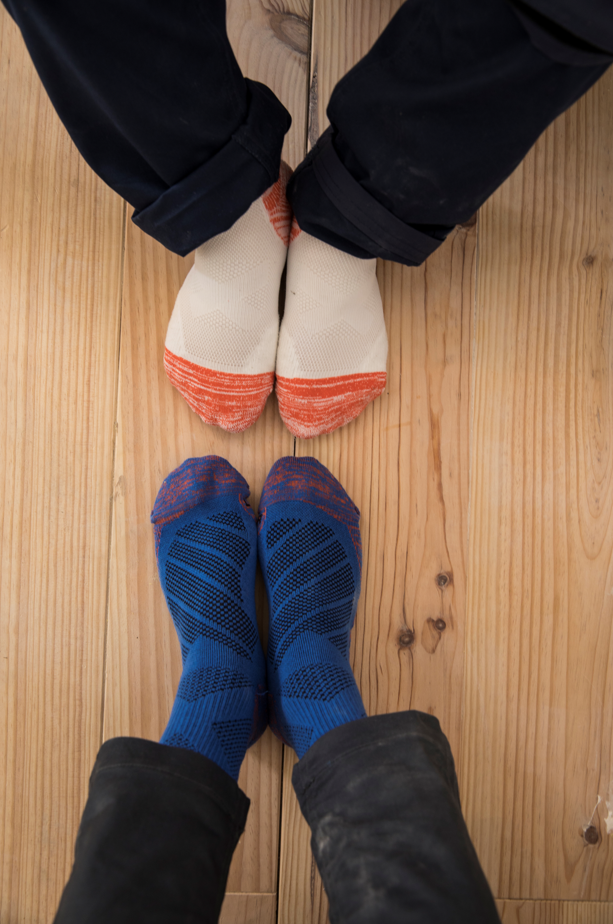
In conclusion, the secret to avoiding foot pain when wearing safety shoes is to understand your needs and anticipate the various stages in the life of the product: from careful selection of the shoe to regular maintenance. By investing in shoes adapted to your working environment and following these tips, you can be both safe and comfortable on a daily basis.
related products
DISCOVER OUR NEWSLETTER
By entering your email address, you will receive our newsletter with our latest products, services, news and advice on prevention and safety.



